One great feature of Aeroplan Elite Status is the ability to redeem eUpgrades on cash bookings and flight reward redemptions. This allows members to book in economy or premium economy, and use eUpgrade credits to move to a higher class of service.
One of the questions that often comes up is how much eUpgrades are worth. While it’s not possible to give a definitive number, as there are so many factors at play, we can still estimate approximately how much value you should be able to get from eUpgrades.
Let’s explore the valuation of eUpgrade credits in the most common use-cases, which include booking with Aeroplan points and booking with cash. We’ll explore the difference between booking to premium economy and business class, too, to see if there are any differences.
Without further ado, let’s dive into this analysis.
1. Upgrading to Business Class on Aeroplan Bookings
For the first set of examples, let’s take a look at using eUpgrades with Aeroplan bookings, with the intention of flying in business class.
Valuation Methodology
To establish the value of an eUpgrade credit, we sampled a series of redemptions across domestic, North America & Sun destinations, and international flights.
For each sample search, we converted the prices for a given flight in Economy (Standard, Flex, Comfort, or Latitude) or Premium Economy (Lowest) into cash values using our current valuation of Aeroplan points of 2.1 cents/point, and added any additional co-pay amounts.
We then took the difference to the value of the Business Class (Lowest) redemption tickets, and divided by the number of eUpgrade credits required.
This represents the value unlocked by a single eUpgrade credit in this scenario.
[ Value of Business Class (Lowest) Flight – ( Value of Given Flight + Co-Pay Amount ) ] ÷ Number of eUpgrade Credits Required
The tables in this article break down this calculation row-by-row:
- Aeroplan points required for a given flight, based on a sample search as an Aeroplan Super Elite member with a premium credit card
- eUpgrade credits required to upgrade to business class
- Co-pay amount (if any)
- Cash cost of redemption: (1) × 2.1 cents/point + (3)
- Difference to business class: Difference of (4) between cost of given flight and cost of corresponding business class flight
- Value per eUpgrade credit: (5) ÷ (2)
It’s worth acknowledging that, for simplicity’s sake, our calculations here do not account for the role of eUpgrade clearance windows.
While Economy (Latitude) and Premium Economy (Flexible) fares permit eUpgrades at anytime (as long as eUpgrade space is available), all other fares are subject to clearance windows. This puts those with higher status at a greater advantage of having their eUpgrades confirmed than those with lower status on the same fares.
1a. Domestic Flights
The following table shows examples of the cost in points for a variety of flights within Canada with the corresponding eUpgrade values.
Economy | Economy | Economy | Premium Economy | Business Class | |
Toronto (YYZ) – Vancouver (YVR) | |||||
Aeroplan points | 11,200 | 22,200 | 29,200 | 34,400 | 69,200 |
eUpgrades to business class | 11 | 10 | 4 | 4 | – |
Co-pay | $150 | ||||
Cash cost of redemption | $385.20 | $466.20 | $613.20 | $722.40 | $1,453.20 |
Difference to business class | $1,068.00 | $987 | $840 | $730.80 | – |
Value per eUpgrade | $97.09 | $98.70 | $210 | $182.70 | – |
Vancouver (YVR) – Edmonton (YEG) | |||||
Aeroplan points | 6,600 | 16,600 | 23,600 | – | 23,000 |
eUpgrades to business class | 5 | 4 | 2 | – | – |
Co-pay | $75 | ||||
Cash cost of redemption | $213.60 | $348.60 | $495.60 | – | $483 |
Difference to business class | $269.40 | $134.40 | $(12.60) | – | – |
Value per eUpgrade | $53.88 | $33.60 | – | – | – |
Calgary (YYC) – Montreal (YUL) | |||||
Aeroplan points | 17,600 | 28,600 | 35,600 | – | 37,600 |
eUpgrades to business class | 11 | 10 | 4 | – | – |
Co-pay | $150 | ||||
Cash cost of redemption | $519.60 | $600.60 | $747.60 | – | $789.60 |
Difference to business class | $270 | $189 | $42 | – | – |
Value per eUpgrade | $24.54 | $18.90 | $10.50 | – | – |
For these sample bookings, the values range from $10.50 to $210 per eUpgrade credit, with an average value of $81.10 and a median value of $53.88.
For the flagship flight between Toronto and Vancouver, which offers lie-flat beds, here’s an excellent example of how eUpgrades can help avoid the shock of dynamic pricing. In this case, I’d be getting excellent value both out of my points and my eUpgrade credits.
For the flight between Vancouver and Edmonton, in most cases I’d likely just tough it out in economy. But, if I had eUpgrades to spare, booking the Economy (Standard) fare for 6,600 Aeroplan points and then combining five eUpgrades with a $75 co-pay, I’d actually be getting pretty decent value.
Furthermore, the $75 co-pay counts towards my Status Qualifying Dollars, which can be helpful if you’re near a threshold either for another status or for Priority Reward.
Lastly, for the flight between Calgary and Montreal on an Airbus A220, the greatest value per eUpgrade credit comes with the Economy (Standard) fare. Even with the $150 co-pay, it could make sense to save the points and supplement the trip with the cash co-pay.

At this point, it’s worth mentioning that the gap between Economy (Standard), Economy (Flex), and Economy (Latitude) has widened by a modest sum as of 2022, compared to as of the Aeroplan program’s relaunch in November 2020.
1b. North America & Sun Destinations
Let’s have a look at some sample eUpgrade values for flights between Canada and the rest of North America, including Sun destinations.
Economy | Economy | Economy | Premium Economy | Business Class | |
Montreal (YUL) – Puerto Vallarta (PVR) | |||||
Aeroplan points | 17,600 | 28,600 | 35,600 | – | 60,700 |
eUpgrades to business class | 11 | 10 | 4 | – | – |
Co-pay | $250 | ||||
Cash cost of redemption | $619.60 | $600.60 | $747.60 | – | $1,274.70 |
Difference to business class | $655.10 | $674.10 | $527.10 | – | – |
Value per eUpgrade | $59.55 | $67.41 | $131.78 | – | – |
Toronto (YYZ) – Los Angeles (LAX) | |||||
Aeroplan points | 11,500 | 22,500 | 29,500 | 31,400 | 121,200 |
eUpgrades to business class | 11 | 10 | 4 | 4 | – |
Co-pay | $250 | ||||
Cash cost of redemption | $491.50 | $472.50 | $619.50 | $659.40 | $2,545.20 |
Difference to business class | $2,053.70 | $2,072.70 | $1,925.70 | $1,885.80 | – |
Value per eUpgrade | $186.70 | $207.27 | $481.43 | $471.45 | – |
Vancouver (YVR) – Newark (EWR) | |||||
Aeroplan points | 14,600 | 25,600 | 32,600 | 33,600 | 108,900 |
eUpgrades to business class | 11 | 10 | 4 | 4 | – |
Co-pay | $250 | ||||
Cash cost of redemption | $556.60 | $537.60 | $684.60 | $705.60 | $2,286.90 |
Difference to business class | $1,730.30 | $1,749.30 | $1,602.30 | $1,581.30 | – |
Value per eUpgrade | $157.30 | $174.93 | $400.58 | $395.33 | – |
For these examples, the values range from $59.55 to a whopping $481.43 per eUpgrade credit. The average value is $248.52, and the median value is $186.70.
For the flight between Montreal and Puerto Vallarta, I’d definitely be inclined to use the “Latitude Attitude” and instantly confirm an upgrade to business class. It’s a good way to make use of your Aeroplan Elite Status, while avoiding the dynamic pricing for business class.
On both transcontinental routes, we are seeing some great value per eUpgrade credit.
From Vancouver to New York, the Economy (Latitude) and the Premium Economy (Lowest) fares are roughly equal. They both offer great value for eUpgrade credits, and I’d either be inclined to instantly confirm the business class seat with the Economy (Latitude) fare, or just book the Premium Economy (Lowest) fare, knowing that I’d be first in line for a waitlist upgrade.
Another interesting situation above is on the flight between Toronto and Los Angeles.
With the inflated Business Class (Lowest) points value on the dynamic pricing scale, again, my inclination would be to either book a Latitude fare and instantly confirm an eUpgrade, or to book a Premium Economy (Lowest) fare and hope to score an outstanding value of $471.45 per eUpgrade.
Even if the latter doesn’t clear, I’d at least have a more comfortable transcontinental flight at a great redemption value, and I wouldn’t be at risk of being in economy class if my eUpgrade gets downgraded.
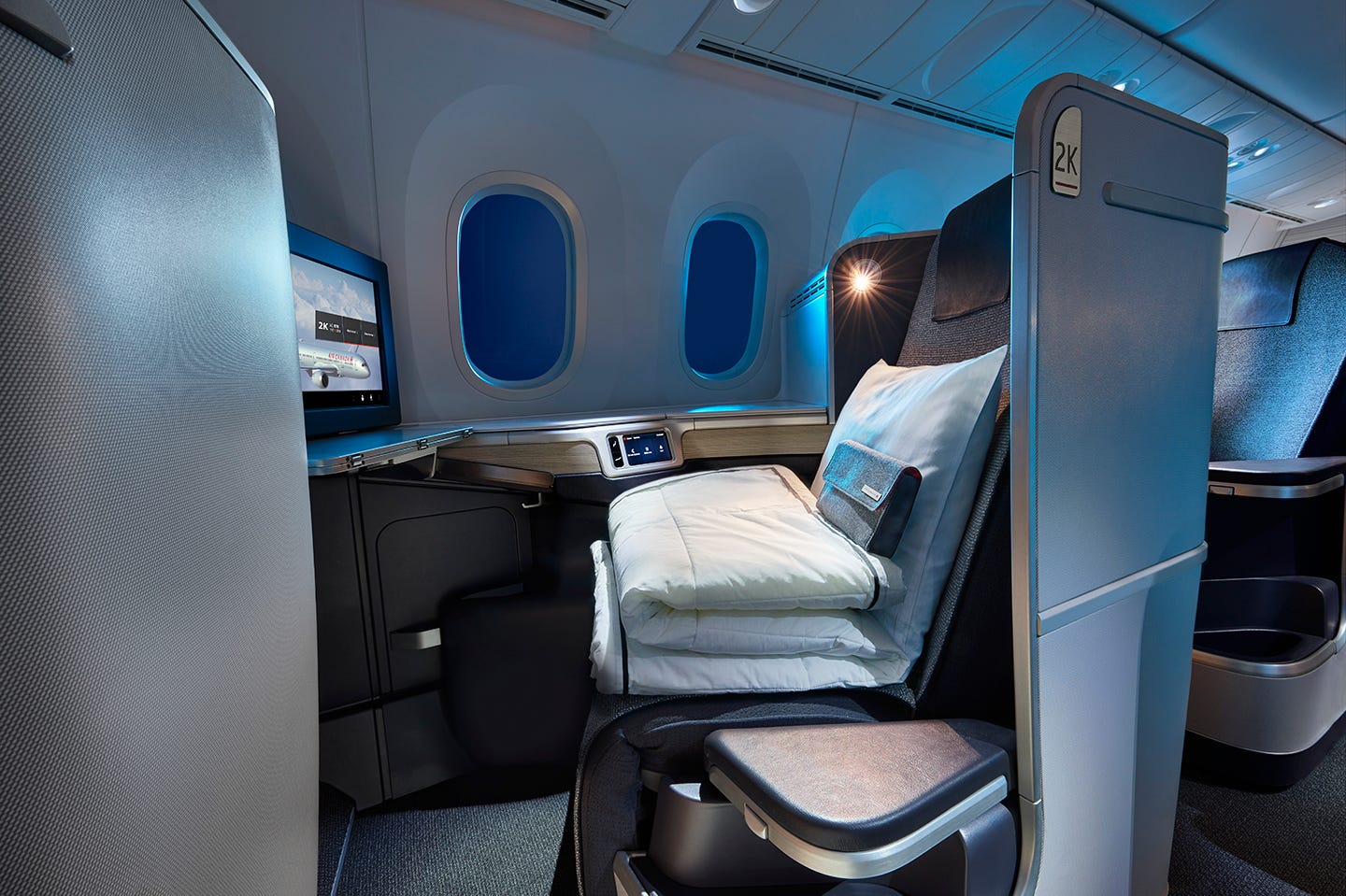
1c. International Flights
Let’s have a look at what sort of value eUpgrades can unlock on international Aeroplan bookings.
Economy | Economy | Premium Economy | Premium Economy | Business Class | |
Toronto – London (LHR) | |||||
Aeroplan points | 33,500 | 44,500 | 46,200 | 58,200 | 56,700 |
eUpgrades to business class | 21 | 18 | 12 | 11 | – |
Co-pay | $750 | $500 | $200 | ||
Cash cost of redemption | $1,453.50 | $1,434.50 | $1,170.20 | $1,222.20 | $1,190.70 |
Difference to business class | $(262.80) | $(243.80) | $20.50 | $(31.50) | – |
Value per eUpgrade | – | – | $1.71 | – | – |
Montreal (YUL) – Casablanca (CMN) | |||||
Aeroplan points | 40,800 | 51,800 | 46,200 | 58,200 | 89,400 |
eUpgrades to business class | 21 | 18 | 12 | 11 | – |
Co-pay | $750 | $500 | $200 | ||
Cash cost of redemption | $1,606.80 | $1,587.80 | $1,170.20 | $1,222.20 | $1,877.40 |
Difference to business class | $270.60 | $289.60 | $707.20 | $655.20 | – |
Value per eUpgrade | $12.89 | $16.09 | $58.93 | $59.56 | – |
Vancouver (YVR) – Hong Kong (HKG) | |||||
Economy (Standard) | Economy (Flex) | Economy (Latitude) | Premium Economy (Lowest) | Business Class (Lowest) | |
Aeroplan points | 52,800 | 64,800 | 84,800 | 86,900 | 219,900 |
eUpgrades to business class | 26 | 23 | 13 | 17 | – |
Co-pay | $750 | $500 | $200 | ||
Cash cost of redemption | $1,858.80 | $1,860.80 | $1,780.80 | $2,024.90 | $4,617.90 |
Difference to business class | $2,759.10 | $2,757.10 | $2,837.10 | $2,593 | – |
Value per eUpgrade | $106.12 | $119.87 | $218.24 | $152.53 | – |
For the above flights, the values range from a measly $1.71 to $218.24 per eUpgrade. The average value is $77.85, and the median value is $59.56.
For all flights outside of North America, there is a mandatory co-pay fee for using eUpgrades on Flex and Premium Economy (Lowest) fares for all Aeroplan Elite Status members except for Super Elites, on top of the universal co-pay with Standard fares.
Co-pay fees can seriously erode value from eUpgrades. In many cases, the additional fees on Standard and Flex fares bring the total cost close to the value of the Latitude fare, which comes with many additional benefits, such as being fully refundable and not subject to eUpgrade clearance windows.
This is indeed the case for the Toronto–London example above: the co-pay amounts for the Economy (Standard) and Economy (Flex) fares bring the total cost above the business class fare itself. In this case, since the cost for business class is at the lower end of the dynamic spectrum, I would book in Business Class (Lowest) and save my eUpgrades for another occasion.
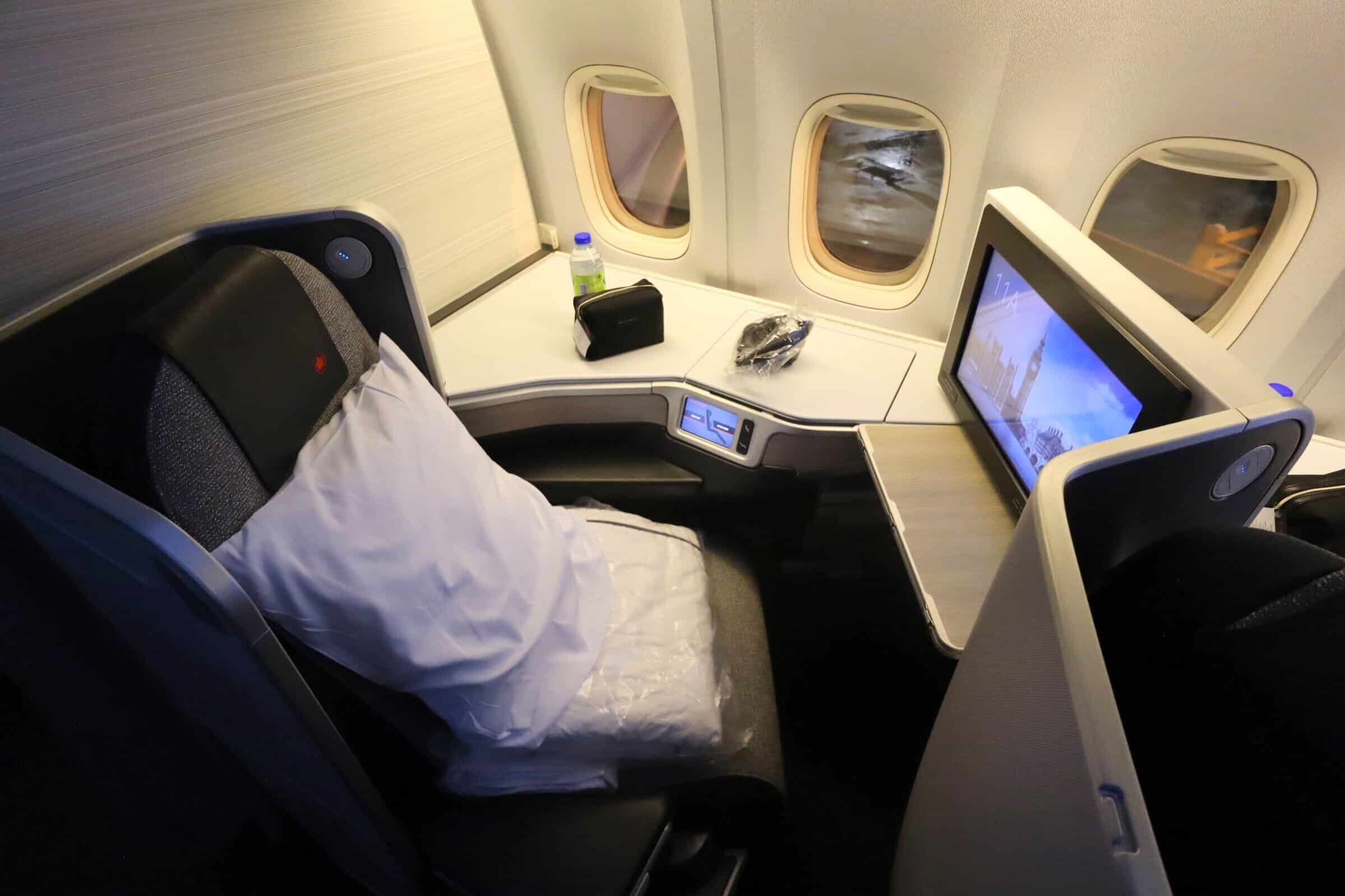
From Montreal to Casablanca, it’s a close call between the Premium Economy (Lowest) and Premium Economy (Flexible) fares.
While the Premium Economy (Lowest) fare costs the least in points, it also comes with a $200 co-pay, a marginally higher cost in eUpgrades, and the disadvantage of being subject to the eUpgrade clearance windows. Ultimately, the Premium Economy (Flexible) fare wins out with a respectable value of $59.56 per eUpgrade and instantly confirming business class on a long-haul route.
Note that Economy (Latitude) fares weren’t included in the above examples, and this is because they were actually more than the Premium Economy (Flexible) fares. Be sure to compare all fares when shopping around for flights, as you might wind up being pleasantly surprised.
Finally, the Vancouver–Hong Kong route is historically a very sought-after route for eUpgrades. At over 13 hours of flight time, having a lie-flat seat and on-call Champagne can certainly stretch the eUpgrade value even farther.
With Hong Kong reopening its borders, now could be a great time to leverage your eUpgrades. Indeed, in this example, where the business class dynamic pricing is less than ideal, you can squeeze a very satisfying $218.24 of value by booking in Economy (Latitude) and using 13 eUpgrades to instantly confirm a seat in Air Canada Signature Class.
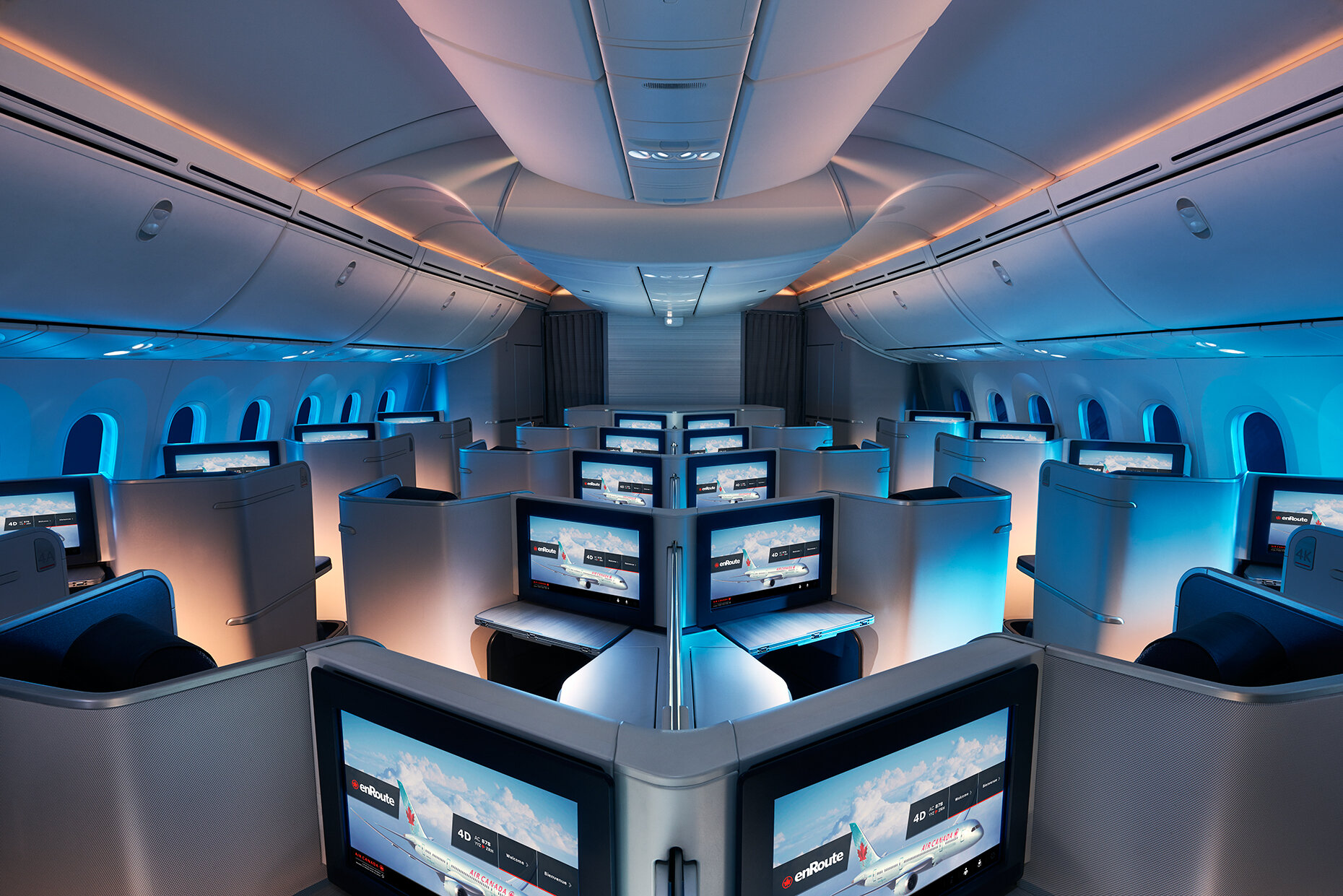
2. Upgrading to Business Class on Cash Bookings
For the next set of examples, let’s take a look at using eUpgrades with cash bookings, again with the intention of flying in business class.
Valuation Methodology
Similar to the process used for eUpgrades on Aeroplan bookings, I sampled the same flights as above for Air Canada flights within Canada, to North American and Sun destinations, and on international routes.
For each search, I took the cash price of the flight in Economy (Standard, Flex, Comfort, Latitude) and Premium Economy (Lowest and, in some cases, Flexible) and added any required co-pay amounts.
Then, I calculated the total cost (fare plus any co-pay) when compared to the Business Class (Lowest) fare, and divided by the number of eUpgrades required. This represents the value unlocked by a single eUpgrade credit in each scenario.
[Cost of Business Class (Lowest) flight – (Cost of a Given Flight + Co-Pay Amount) ] / Number of eUpgrade Credits Required]
The tables below break down this calculation row-by-row:
- Cost of a given flight
- eUpgrade credits required to upgrade to business class
- Co-pay amount (if any)
- Difference between the total cost of a flight (including co-pay) [(1) + (3)] and Business Class (Lowest) fare
- Value per eUpgrade credit: (4) ÷ (2)
As with the examination of eUpgrades with Aeroplan bookings, for reasons of parsimony, the charts below do not take into account the eUpgrade clearance window.
Aside from Latitude and Premium Economy (Flexible) fares, the chance of getting an eUpgrade confirmed within the booking window depends on eUpgrade availability and your status. Those with higher statuses have first dibs on eUpgrades, and those with lower statuses are at the mercy of availability closer to the date of travel.
2a. Domestic Flights
The first table shows the same routings in the Aeroplan section, but booked with cash instead of points.
Note that we’ve excluded Premium Economy (Flexible) fares from the analysis, as they were uniformly more expensive than Economy (Latitude) fares in all of our searches, and thus would represent strictly poorer value.
Economy | Economy | Economy | Economy | Premium Economy | Business Class | |
Toronto (YYZ) – Vancouver (YVR) | ||||||
Cost | $399 | $467 | $546 | $1,219 | $943 | $1,398 |
eUpgrades to business class | 11 | 10 | 8 | 2 | 4 | – |
Co-pay | $250 | |||||
Difference to business class | $749 | $931 | $852 | $179 | $455 | – |
Value per eUpgrade | $68 | $93.10 | $106.50 | $89.50 | $113.75 | – |
Vancouver (YVR) – Edmonton (YEG) | ||||||
Cost | $192 | $234 | $276 | $730 | – | $543 |
eUpgrades to business class | 5 | 4 | 3 | 1 | – | – |
Co-pay | $75 | |||||
Difference to business class | $276 | $309 | $267 | – | – | – |
Value per eUpgrade | $55.20 | $77.25 | $89 | – | – | – |
Calgary (YYC) – Montreal (YUL) | ||||||
Cost | $380 | $443 | $517 | $988 | – | $866 |
eUpgrades to business class | 11 | 10 | 8 | 2 | – | – |
Co-pay | $150 | |||||
Difference to business class | $336 | $423 | $349 | – | – | – |
Value per eUpgrade | $30.55 | $42.30 | $43.63 | – | – | – |
For this sample of flights, the values range from $30.55 to $113.75 per eUpgrade credit, with an average value of $73.53 and a median value of $77.25.
On the route with a three-cabin aircraft (Toronto–Vancouver), I want to give a shout-out to the Premium Economy (Lowest) fare. It’s just less than twice the cost of the Economy (Comfort) fare, and it’s also more restrictive (non-refundable).
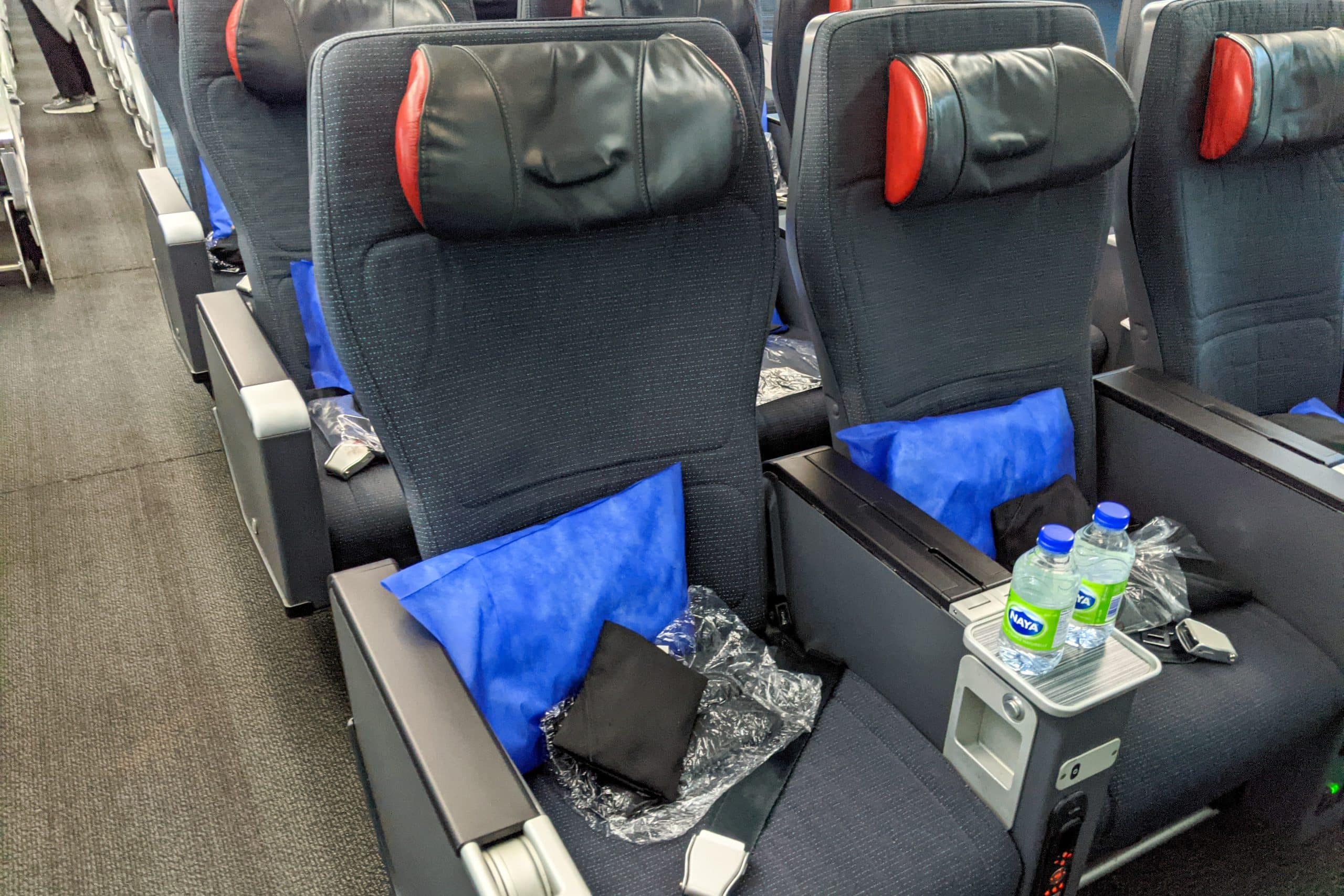
However, it requires half as many eUpgrades as the Comfort fare, and you’re guaranteed to be in a higher class of service for your flight, if that’s important for you. This bodes well for rationing your eUpgrades for other bookings and for travelling with some more comfort.
In this scenario, you can also get solid value out of eUpgrades on any of the other fares, as long as you’re confident that the eUpgrade will clear.
On the Vancouver–Edmonton route, the Economy (Comfort) fare comes out as the winner, as the Economy (Latitude) fare is actually more expensive than booking in business class to begin with.
Since this is such a short flight, I’d be inclined to book in an Economy (Flex) or an Economy (Comfort) fare, given the other perks that come along with the fare brands and the negligible difference to Economy (Standard).
On the Calgary–Montreal route, the Economy (Comfort) fare once again wins out for providing the best eUpgrade value, and the Economy (Latitude) fare is actually higher than the Business Class (Lowest).
I’d be inclined to go with either the Economy (Flex) or Economy (Comfort) fares here, for the same reasons as the on the Vancouver–Edmonton flight.

2b. North America & Sun Destinations
The below chart shows flights to North America and Sun destinations and the corresponding eUpgrade values.
Economy | Economy | Economy | Economy | Premium Economy | Business Class | |
Montreal (YUL) – Puerto Vallarta (PVR) | ||||||
Cost | $412 | $462 | $537 | $1,488 | – | $1,249 |
eUpgrades to business class | 11 | 10 | 8 | 2 | – | – |
Co-pay | $250 | |||||
Difference to business class | $587 | $787 | $712 | – | – | – |
Value per eUpgrade | $53.36 | $78.70 | $89 | – | – | – |
Toronto (YYZ) – Los Angeles (LAX) | ||||||
Cost | $282 | $371 | $423 | $1,193 | $886 | $1,776 |
eUpgrades to business class | 11 | 10 | 8 | 2 | 4 | – |
Co-pay | $250 | |||||
Difference to business class | $1,244 | $1,405 | $1,353 | $583 | $890 | – |
Value per eUpgrade | $113.09 | $140.50 | $169.13 | $291.50 | $222.50 | – |
Vancouver (YVR) – Newark (EWR) | ||||||
Cost | $353 | $442 | $495 | $994 | $924 | $1,866 |
eUpgrades to business class | 11 | 10 | 8 | 2 | 4 | – |
Co-pay | $250 | |||||
Difference to business class | $1,263 | $1,424 | $1,371 | $872 | $942 | – |
Value per eUpgrade | $114.82 | $142.40 | $171.38 | $436 | $235.50 | – |
For this sample, the eUpgrade values range from $53.36 to a staggering $436, with an average value of $165.76 and a median value of $142.40.
In all cases, the $250 co-pay fee bumps the total cost of the Economy (Standard) fare to over the Economy (Comfort) fare.
If you were to book Economy (Standard), you’d be losing out on Aeroplan mileage accumulation and having a refundable fare, and you’d also burn an additional three eUpgrade credits per person on the booking.
This is a good reminder to pay attention to co-pay fees when planning on using eUpgrades, as they can erode the value you get out of them. In many cases, it’s worth paying a higher fare in the first place.
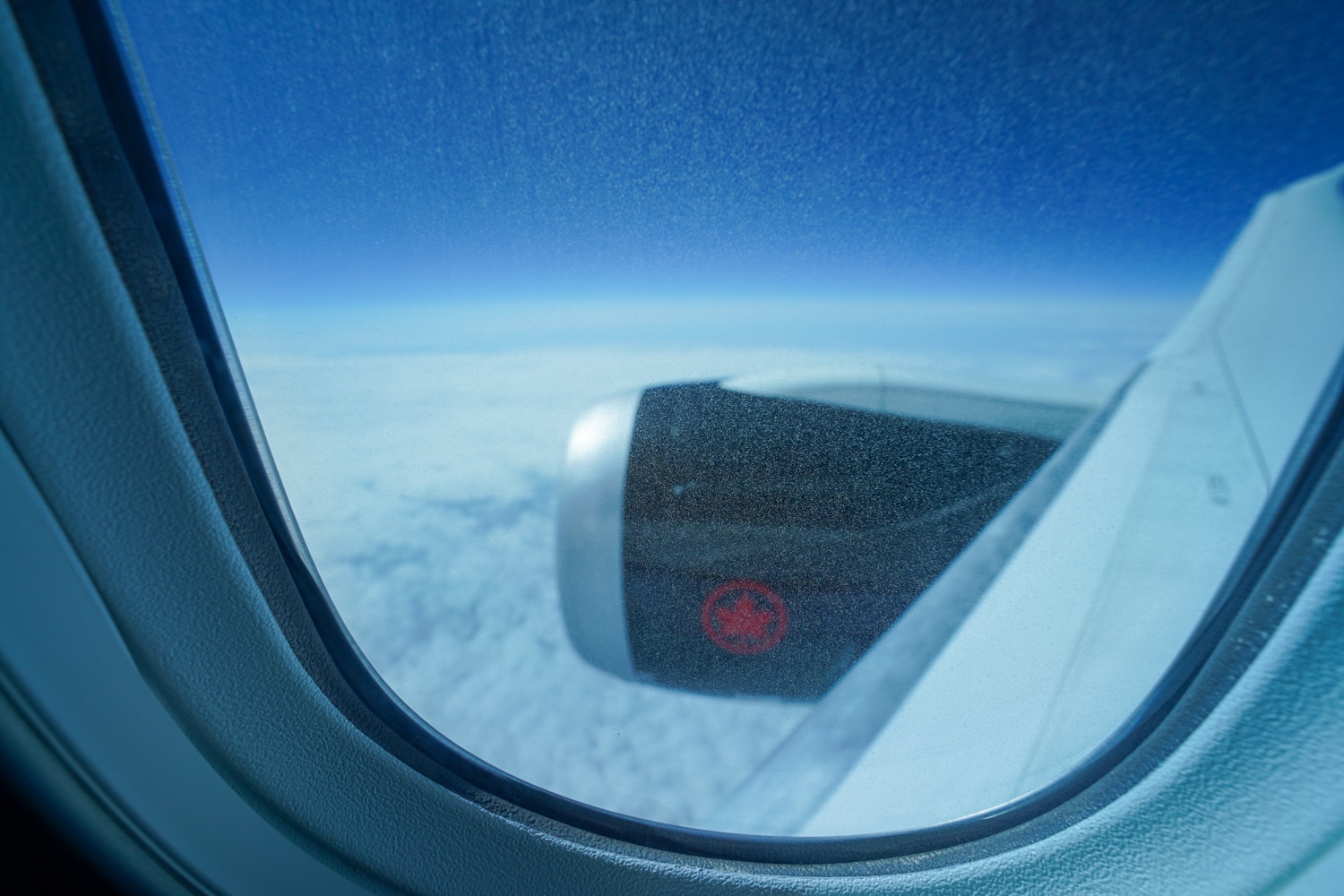
From Montreal to Puerto Vallarta, we see a similar pattern, where the Economy (Flex) and Economy (Comfort) fares don’t differ by much, but they’re significantly less than the Economy (Latitude) or the Business Class (Lowest) fares.
With this in mind, I’d be inclined to book either of them instead of the higher fares, especially since this particular flight is on a narrow-body aircraft.
An interesting situation emerges for the Toronto–Los Angeles route, which has a three-cabin aircraft.
If you were going to book business class to begin with, you’d wind up saving almost $600 by paying for an Economy (Latitude) fare and using two eUpgrades at a great value.
If flying in premium economy is a reasonable alternative, you’d be paying a few hundred dollars less than Economy (Latitude), but you’d still wind up with both a higher class of service than economy and solid value, should your eUpgrade to business class clear.
Otherwise, if you have a higher status and the flight isn’t completely full, you should have a good shot at an eUpgrade with either the Economy (Flex) or the Economy (Comfort) fares. Should your eUpgrade clear, you’d have saved a tidy sum of cash and squeezed some great value out of your eUpgrades.
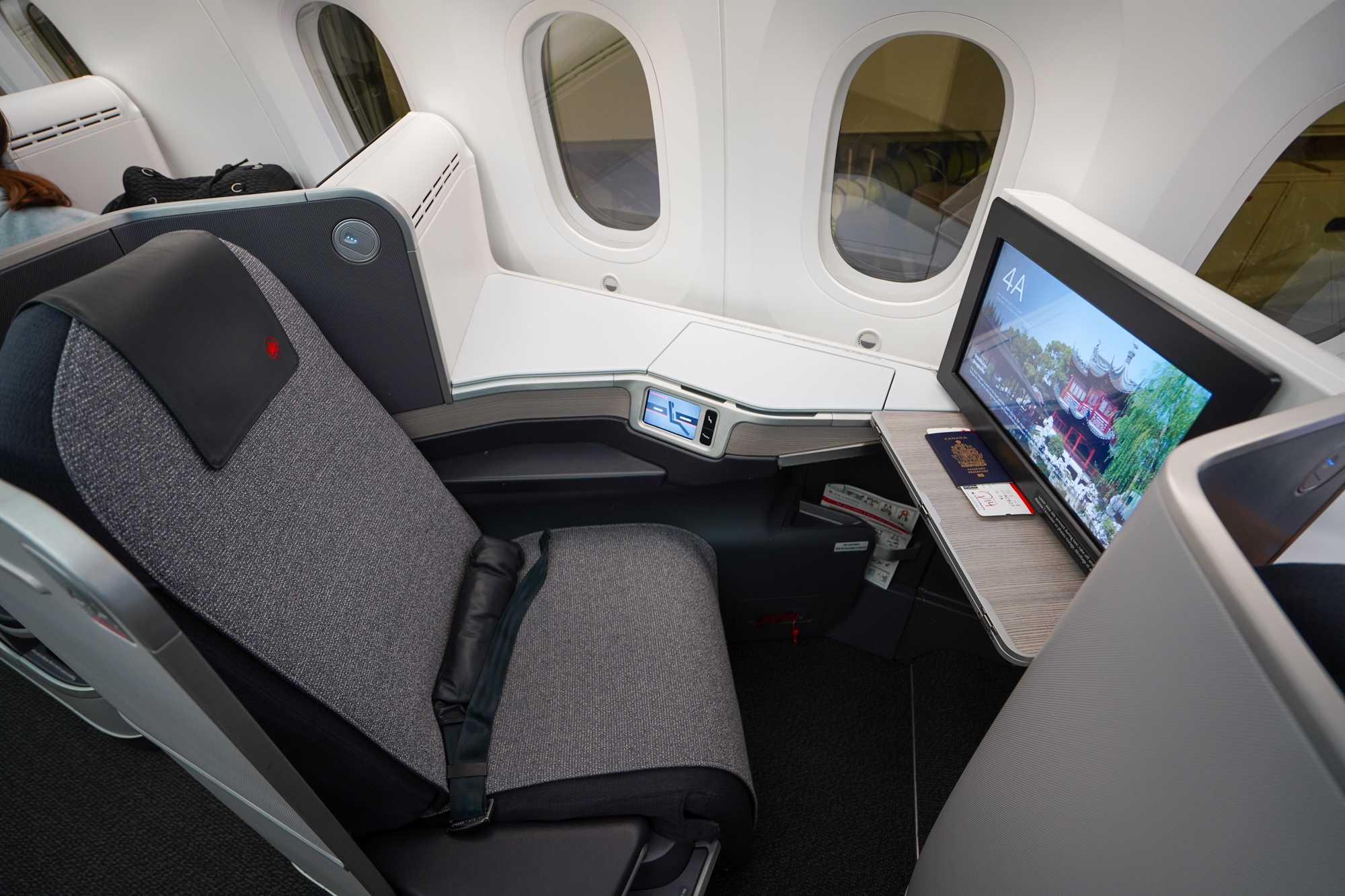
A very interesting situation arises in the example of flying from Vancouver to New York on a three-cabin aircraft. If you need to fly in business class, then you’d be saving around 50% by booking an Economy (Latitude) fare and using two eUpgrades at a value of $436 each.
Since the price of the Economy (Latitude) and Premium Economy (Lowest) fares are relatively the same, I’d be inclined to book the former for the instant upgrade to business class.
With any of the other fares, you’re still getting great value out of eUpgrades, as long as your request clears.
2c. International Flights
Lastly, let’s have a look at how eUpgrade values on paid international flights stack up compared to other destinations.
Note that the Economy (Comfort) option is not available on international routes. Instead, we’ve included Premium Economy (Flexible) fares here as a point of comparison to Latitude fares, as they both are not subject to a clearance window.
Economy | Economy | Economy | Premium Economy | Premium Economy | Business Class | |
Toronto (YYZ) – London (LHR) | ||||||
Cost | $412 | $919 | $1,645 | $1,279 | $2,005 | $3,891 |
eUpgrades to business class | 18 | 15 | 11 | 12 | 11 | – |
Co-pay | $750 | $500 | $200 | |||
Difference to business class | $2,729 | $2,472 | $2,246 | $2,412 | $1,886 | – |
Value per eUpgrade | $151.60 | $164.80 | $204.18 | $201 | $171.45 | – |
Montreal (YUL) – Casablanca (CMN) | ||||||
Cost | $531 | $999 | $1,632 | $914 | $1,954 | $1,331 |
eUpgrades to business class | 21 | 15 | 11 | 12 | 11 | – |
Co-pay | $750 | $500 | $200 | |||
Difference to business class | $50 | $(168) | $(301) | $217 | $(623) | – |
Value per eUpgrade | $2.38 | – | – | $18.08 | – | – |
Vancouver (YVR) – Hong Kong (HKG) | ||||||
Cost | $778 | $1,255 | $3,772 | $1,345 | $5,838 | $3,392 |
eUpgrades to business class | 23 | 20 | 13 | 17 | 13 | – |
Co-pay | $750 | $500 | $200 | |||
Difference to business class | $1,864 | $1,637 | $(380) | $1,847 | $($2,446) | – |
Value per eUpgrade | $81.04 | $81.85 | – | $108.65 | – | – |
The eUpgrade values range from a paltry low of $2.38 to a high of $204.18, with an average value of $118.50 and a median value of $130.13.
I’d like to give a very honourable mention to the Premium Economy (Lowest) fares here, again. The existence of $750 and $500 co-pay fees on the Economy (Standard) and Economy (Flex) fares pushes them to be either higher or close to the Premium Economy (Lowest) fare in most cases.
Furthermore, the eUpgrade requirements for Premium Economy (Lowest) fares are substantially less than those of the Economy (Standard) fares.
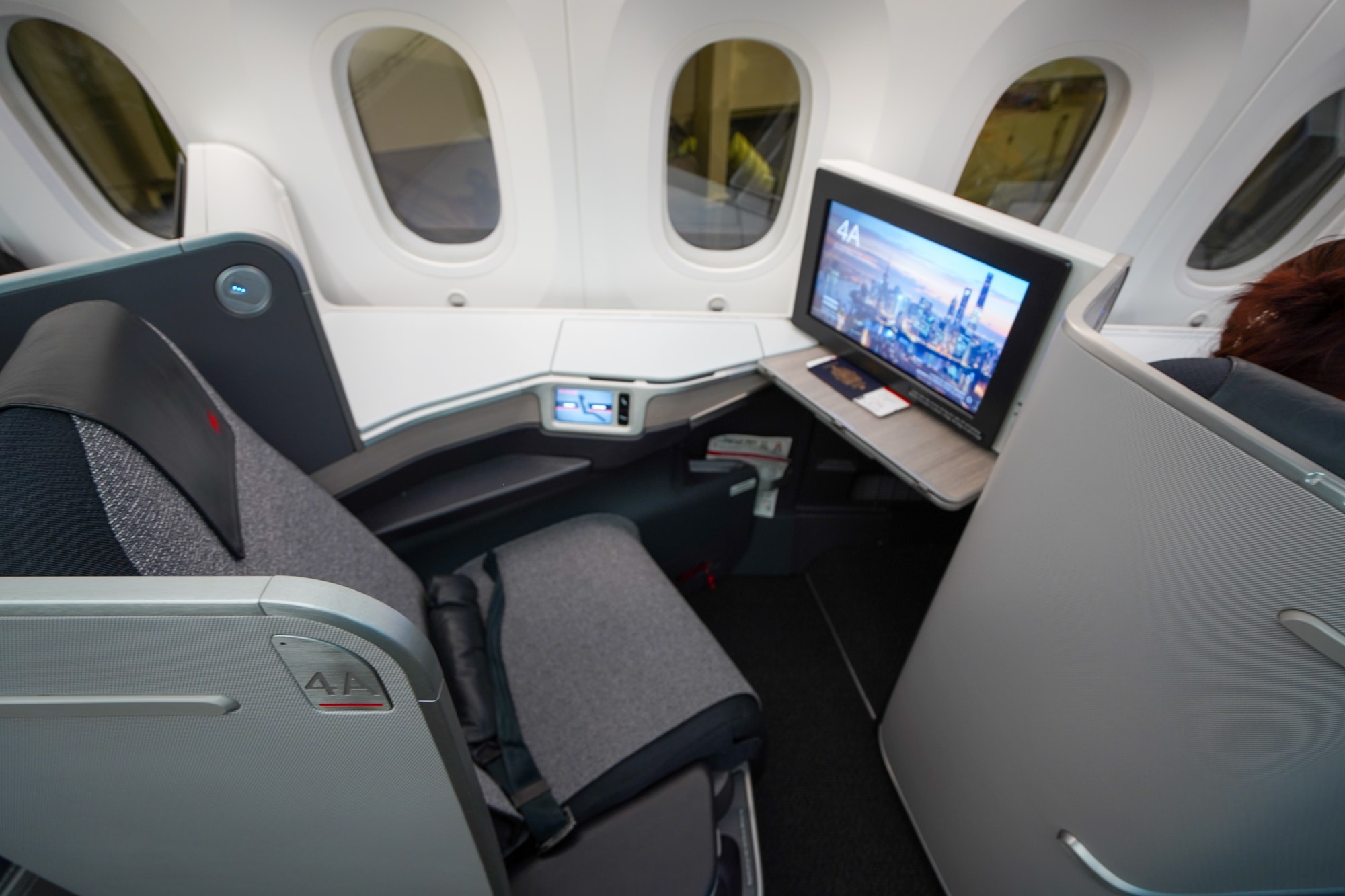
From Toronto to London, we can actually get some excellent value out of paying for an Economy (Latitude) fare and using eUpgrades. The price is significantly less than the Business Class (Lowest) fare, and you’d get great value from your eUpgrades.
Since it’s a fully refundable fare with a suite of other perks, one could easily argue that the co-pay fees on the lower economy fares would be better spent on a higher base fare to begin with.
On the Montreal–Casablanca route, we see a very competitively priced Business Class (Lowest) fare. Taking the co-pay fees on the other fares into consideration, it makes sense just to book in business class to begin with here, and save your eUpgrades for another time.
For the Vancouver–Hong Kong flight, we see that the Economy (Latitude) fare is actually higher than the Business Class (Lowest). The presence of hefty co-pay fees on the other economy fares would lead me to book a Premium Economy (Lowest) fare and hope for an eUpgrade.
3. Upgrading to Premium Economy
Although upgrading to business class is the standout use-case for eUpgrades, it may not always be possible to snag that lie-flat seat in the front of the plane.
For the final part of this analysis, let’s take a look at a few situations where you could use eUpgrades for premium economy when paying with both points and cash.
Valuation Methodology
Similar to the processes used to estimate eUpgrade values for business class, I sampled a few flights that offer the premium economy cabin on domestic, trans-border, and international routes.
For each search, I took the Aeroplan and cash values of economy fares and compared them to the corresponding premium economy fares with any required co-pay amounts.
For the Aeroplan bookings, I converted the points value into a cash value using our current valuation of 2.1 cents per point (cpp).
Then, I calculated the total cost (i.e., the fare plus any co-pay for cash bookings, or the converted cash value of Aeroplan points plus any co-pay for Aeroplan bookings) and compared it to the premium economy cost, and divided it by the number of eUpgrades required. In each case, the result represents the value unlocked by a single eUpgrade credit:
[ Value of Premium Economy Flight – ( Value of Given Flight + Co-Pay Amount ) ] ÷ Number of eUpgrade Credits Required
As before, the valuation does not take into consideration the eUpgrade clearance window, which will affect the ability to confirm an upgrade.
3a. Domestic Flights
The following table shows a comparison of cash and Aeroplan bookings and the corresponding eUpgrade values for premium economy on a domestic flight from Toronto to Vancouver.
Economy | Economy | Economy | Economy | Premium Economy | |
Toronto (YYZ) – Vancouver (YVR), Cash fare | |||||
Cost | $306 | $374 | $510 | $1,219 | $822 |
eUpgrades to premium economy | 7 | 6 | 6 | 1 | – |
Co-pay | $100 | ||||
Difference to premium economy | $416 | $448 | $312 | $(397) | – |
Value per eUpgrade | $59.43 | $74.67 | $52 | – | – |
Toronto (YYZ) – Vancouver (YVR), Aeroplan points | |||||
Cost | 12,600 | 23,600 | – | 30,600 | 34,400 |
eUpgrades to premium economy | 7 | 6 | – | 1 | – |
Co-pay | $100 | ||||
Cash cost of redemption | $364.60 | $495.60 | – | $642.60 | $722.40 |
Difference to premium economy | $357.80 | $226.80 | – | $79.80 | – |
Value per eUpgrade | $51.11 | $37.80 | – | $79.80 | – |
In this case, the eUpgrade value varies widely from a measly $5.51 to a respectable $87.17.
Generally speaking, an Economy (Latitude) fare tends to be more expensive than booking the Premium Economy (Lowest) fare, either with cash or points. Thus, if you are looking to travel in premium economy to begin with, it’s probably best to book it in the first place, since you won’t get particularly good value out of using eUpgrades.
For the points bookings, Aeroplan’s dynamic pricing really becomes apparent. The Premium Economy (Lowest) fare is about twice what it costs at the lowest “baseline” level.
In this case, you can arguably get good value out of booking an Economy (Latitude) fare and using a single eUpgrade to save around 4,000 points, but you may be better served booking the Economy (Flex) fare and taking your chances.
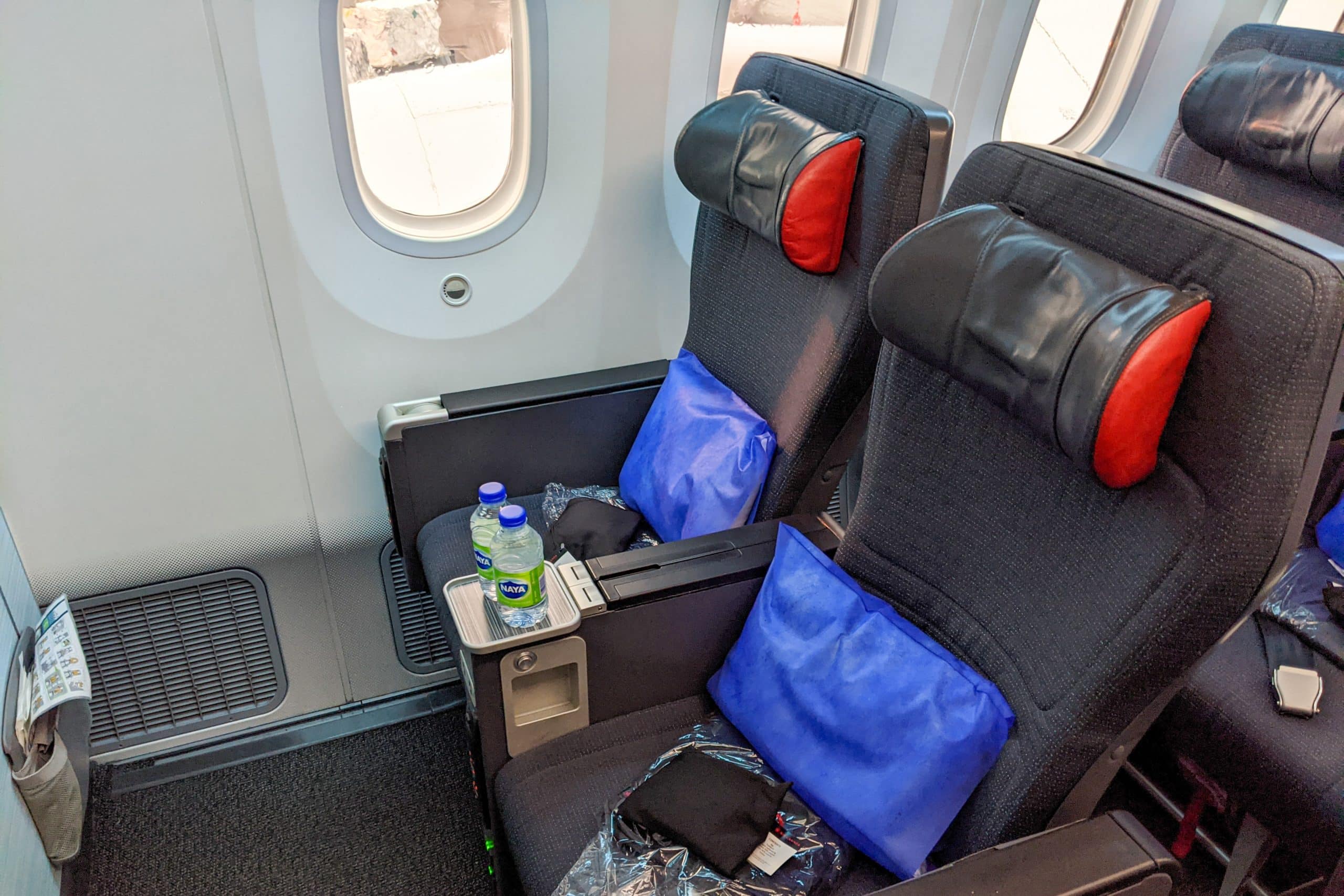
3b. North America & Sun Destinations
The following table shows a comparison of cash and Aeroplan bookings and the corresponding eUpgrade values for premium economy from Toronto to Los Angeles.
Economy | Economy | Economy | Economy | Premium Economy | |
Toronto (YYZ) – Los Angeles (LAX), Cash fare | |||||
Cost | $297 | $387 | $439 | $1,193 | $750 |
eUpgrades to premium economy | 7 | 6 | 6 | 1 | – |
Co-pay | $100 | ||||
Difference to premium economy | $353 | $363 | $311 | $(443) | – |
Value per eUpgrade | $50.43 | $60.50 | $51.83 | – | – |
Toronto (YYZ) – Los Angeles (LAX), Aeroplan points | |||||
Cost | 10,500 | 21,500 | – | 28,500 | 17,100 |
eUpgrades to premium economy | 7 | 6 | – | 2 | – |
Co-pay | $100 | ||||
Cash cost of redemption | $320.50 | $451.50 | – | $598.50 | $359.10 |
Difference to premium economy | $38.60 | $(92.40) | – | $(239.40) | – |
Value per eUpgrade | $5.51 | – | – | – | – |
The eUpgrade valuations here range from $5.51 on the low end to $60.50 on the high end.
We see a stark contrast to the value per eUpgrade on cash bookings and on Aeroplan bookings. For cash bookings, the Economy (Flex) fare offers the most value per eUpgrade, but if I had the choice of booking in cash or with points, I’d opt for the latter.
The cash equivalent for booking in premium economy using Aeroplan points is $359.10, based on our points valuations. This is actually more than the Economy (Flex) cash fare, so my plan would be to use points here.
Compared to the cost of booking in premium economy on a cash fare, you’d be saving around 50%, which is a great deal.
3c. International
The following table shows a comparison of cash and Aeroplan bookings and the corresponding eUpgrade values for premium economy from Montreal to Paris.
Economy | Economy | Economy | Economy | Premium Economy | |
Montreal (YUL) – Paris (CDG), Cash fare | |||||
Cost | $514 | $973 | – | $1,716 | $1,548 |
eUpgrades to premium economy | 11 | 8 | – | 6 | – |
Co-pay | $250 | ||||
Difference to premium economy | $784 | $575 | – | $(168) | – |
Value per eUpgrade | $71.27 | $71.88 | – | – | – |
Montreal (YUL) – Paris (YUL), Aeroplan points | |||||
Cost | 40,800 | 51,800 | – | 70,800 | 81,300 |
eUpgrades to premium economy | 14 | 11 | – | 6 | – |
Co-pay | $300 | ||||
Cash cost of redemption | $1,156.80 | $1,087.80 | – | $1,486.80 | $1,707.30 |
Difference to premium economy | $550.50 | $619.50 | – | $220.50 | – |
Value per eUpgrade | $39.32 | $56.32 | – | $36.75 | – |
In this last example, we see a range of similar eUpgrade values across both charts, ranging between $39.32 and $71.88.
In both cases, using eUpgrades with the Economy (Flex) fare winds up striking a good balance. Indeed, the Premium Economy (Lowest) fare is comparatively high, so although using eUpgrades always comes with some risk, you can come out nicely ahead if it winds up working out for you.
Keep in mind that if your eUpgrade to business class doesn’t pan out, you’ll also be in the running for an eUpgrade to premium economy. Aside from overnight long-haul flights, where a lie-flat bed is oh-so desired, premium economy is a perfectly comfortable place to be.
So, What Are Air Canada eUpgrades Worth?
In this iteration of our eUpgrade valuations, taking into account all the sample searches we conducted, the findings can be summarized as follows:
Minimum | Maximum | Average | Median | |
By booking currency | ||||
Aeroplan points | $1.71 | $481.43 | $125.45 | $73.61 |
Cash | $2.38 | $436.00 | $112.95 | $89.00 |
By upgraded class of service | ||||
Upgrading to business class | $1.71 | $481.43 | $134.31 | $106.50 |
Upgrading to premium economy | $5.51 | $79.80 | $53.24 | $52.00 |
By geography | ||||
Domestic | $10.50 | $210.00 | $72.83 | $63.72 |
North America / Sun destinations | $5.51 | $481.43 | $184.28 | $149.85 |
International | $1.71 | $218.24 | $91.94 | $76.46 |
Total | ||||
Total | $1.71 | $481.43 | $118.72 | $85.00 |
As you can see, the value unlocked by a single eUpgrade credit can vary significantly depending on a number of factors, including how you book, which cabin you upgrade to, and where you tend to fly.
Using eUpgrades on Aeroplan bookings tends to have higher potential upside, but a slightly lower valuation on balance, compared to using eUpgrades on cash flights.
Upgrading to business class will unlock a significantly higher value for your eUpgrades than upgrading to premium economy, and that’s well within our expectation.
Lastly, it’s perhaps interesting to note that eUpgrades appear to offer outsized value on flights within North America and Sun destinations, compared to both domestic and international flights.
All things considered, I think it would be fair to estimate a valuation of $90/eUpgrade, regardless of how they’re redeemed. I’d say that should aim to get at least $90 of value from each eUpgrade credit.
Note that this figure can be adjusted based on your own flying patterns. If you travel very often or at the last minute, you might aim for an even higher value than $90/eUpgrade when deciding whether to use them.
On the other hand, those who travel infrequently might not be too concerned about extracting maximum value from eUpgrades, instead simply treating them as a way to save a few dollars or Aeroplan points throughout the year.
Either way, it’s worth crunching the numbers when you’re considering using your eUpgrades to see what kind of value you’re getting. These numbers can also inform your decision as to whether it’s worth paying the annual fee from a premium Aeroplan credit card to rollover up to 50 eUpgrades per year.
Conclusion
Aeroplan Elite Status members can redeem eUpgrade credits on Aeroplan and cash bookings. Doing so can save you money and points, as well as increasing the value that you get out of your status.
It’s important to weigh up multiple factors to find the most value in your eUpgrade credits, including your booking currency, desired class of service, route and destination, and future travel plans.
Through sampling a series of routes, we’ve seen that there’s a very wide range of possible values for your eUpgrade credits, and we’d peg $90/eUpgrade as a reasonable target when deciding whether or not to redeem them.

















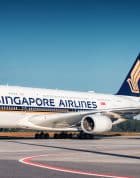


Thanks for this very helpful article – it’s always helpful to quantify the value, especially as my Amex Aeroplan Reserve renewal date approaches. One question – I recently got a reminder of the fact that eups are only valid for travel during the year they were issued when I booked a latitude fare and ran into an error message when trying to apply eups since the flight is in Feb next year. When do the new eups for 2023 get posted to accounts, my recollection is that it was late December last year? Thanks!
Hi Dave! Yes, your eUpgrades need to be valid for the date of travel. If you’ve renewed your status for 2023, you’ll get new eUps in early January. Your eUps from this year (up to 50) will rollover with your Reserve card, but that won’t be until later on in January at the earliest.
This October 2022 update deserves a slow clap. Thanks for distilling all the data for us!
Thanks Leon!
Hi, I was wondering if I booked a flight to China, with a stop at Japan (not sure if required stop or I intentionally add stop), will eupgrade apply towards both segments or single segment? I ask because China would be over 5000 mile.
The eUpgrade will only apply to the Air Canada segment – they cannot be used for upgrades on partner airlines.
So if my wife and I wished to travel business class from Vancouver to Barcelona (to meet a cruise ship) would it be appropriate from a cost benefit anaysis to use our points to upgrade?
I haven’t used points to bid for an upgrade, but it’s definitely worth looking into for a long-haul flight!
So all new to this and aeroplan. Signed up for td card, do you get eups with that as well, or just the points. How do you earn eups. Thanks
Hi! I made a Aeroplan booking for YUL-YVR-AKL roundtrip. Premium Economy (Flexible) to go , and Premium Economy (Lowest) for the return. I’m Aeroplan 25K, I want to use EUpgrades to upgrade the first flight in Business, it shows availability in search result, but when I try to proceed on my ticket, it shows that I would be waitlisted. I cannot complete the process because I have to wait EUpgrades rollover (in march, I hope…). But why the waitlist for the upgrade, I tought it would confirm right away for Premium Flexible. Could it be because of the different fare option?
Sounds like a great use of eUpgrades! As long as you have eUpgrades that are valid for the date of travel, the eUpgrade will process even if it shows ‘Waitlisted’ when you go to confirm. As soon as you confirm, the eUpgrade will process, and you should get an e-mail letting you know. For the other Premium Economy (Lowest) flight, you’ll have to wait for the clearance window, but that shouldn’t affect the Premium Economy (Flexible) flight. Let us know how it goes!
Thanks for the reply. I have 20 eUpgrades expiring on Feb 28th 2021. I just got the Amex Aeroplan Reserve. Do you know when the eUpgrade rollover will apply?
It will happen automatically some time in March 🙂
Should I be worried my eupgrades didn’t rollover, or are other people in the same boat?
Hi Victoria. You aren’t the only one still waiting for your eUpgrades to rollover. But, since it is now April, I don’t think getting in touch with Air Canada is a bad idea. Let us know how it goes!
I received a reply from Air Canada on my inquiry and they said in order for my eupgrades that expired Feb 28 2021 to be rolled over I had to have signed up by Dec 2020 to qualify. I got my card in early Feb so I won’t see a rollover until end of 2022. My understanding was as long as I signed up before they expired they would roll over but I guess I interpreted wrong…
Hi Victoria. On a Zoom chat with Points, Miles, and Bling, the AC execs confirmed that people who applied for a premium card between January 1st and February 28th would be eligible for eUpgrade rollover. You’ll have to contact them directly or hopefully Aeroplan will be able to handle this request in the near future. So, some good news!
Hello T.J. What do you mean by “you can also instantly confirm the upgrade, as Latitude fares are not subject to clearance windows”. How do you go about getting it instantly? I’ve tried this with a flight from SYD. I was told by A.C. rep. that I needed to wait until a week before my flight in Nov, to can a confirmation. I decided to cancel rather than take a chance.
Hello. With Latitude fares, there isn’t a clearance window as there are with other fares. So, if there is eUpgrade space available, your request should confirm instantly. You can find eUpgrade space either on ExpertFlyer (searching for R fares) or on the Air Canada website.
Where exactly does it go from economy to business?
I see no option for selecting my business seat.
I stopped right before paying by credit card.
Yet I was not able to see any change in class.
Am I suppose to press something other than “Continue” ?
Briefly, here’s what to do:
1) check for eUpgrade availability on the search results page on the AC website (Sort and Filter on the Aeroplan results,
2) If eUograde space is available, complete a Latitude booking (it’s fully refundable)
3) in the email that’s sent to you, there is a link for eUpgrade. Follow that link
4) select the flight you’d like to upgrade.
5) confirm eUpgrade, select seats.
Incredibly clear explanation T.J. Thank your for this and the comments on “waitlisted” from 2 weeks ago !
Big thank you. I always thought the emails where just a confirmation. Never went beyond that.
I was planning on using eUps to upgrade my wife and two kids on a flight from Japan… but found out that I can only use them for myself… as I understand it. Even if bought on my account. This is an annoying limitation… unless I got that wrong.
The person with status needs to be on the booking to use eUpgrades. If you are a Super Elite, you can nominate someone to use your eUps on any booking. So, if you are travelling together, you can use them for one other person on the booking, and maybe one more can be requested at the airport.
Great post. I think e-upgrades on awards are a great feature in the new program.
A few notes having booked a dozen or so domestic flights in the new program. I often just comapre the Eco Latitude to Lowest Biz to determine e-up value at a glance.
Occasionally its worth looking at Premium Eco if booking last minute within your clearance window.
Unlike in your examples, I find the Lowest Biz is very often inflated so i think the valuation for domestic will be higher in practice.
Especially the flaghsip routes YYZ/YUL-YYC/YVR. Most of the time the biz lowest seems to be at least 20k more points, sometimes even 100k more when forcing a connection through YYZ from a secondary city at an ideal time of day.
Basically rather than going for the cheapest, I often choose my route first (to ensure wide-body), then my departure/connection/arrival times. So when routing and timing are prioritized, the pricing J pricinc is usually sky high resulting in excellent e-up value.
Lastly, can you guys please consider using a table that is zoom-able so we can choose how much we can view from a mobile device? There is much scrolling up down and side to side in order to see eveything, and no zoom in or out ability.
Thanks for your efforts, keep up the good work 👍
Great points, Mike! Thanks for sharing.
There are indeed many instances of the points cost of business class domestic flights being sky high where you can get excellent eUpgrade value. I’m looking at flights between Toronto and Vancouver later this year and the Latitude + eUp combination would be worth $129 per eUp to J. I’m also happy in PY on that route, though 🙂
I’ve noted your zoomable table request and will discuss it with the team.
Hi TJ,
For YYZ-YVR, why is your cash cost of premium economy (lowest) only $120.00? Is there a mistake here?
My mistake when transcribing the table. Thanks for catching that.
Hi TJ
Very interesting article! Would you consider making your spreadsheet available for calculating effective values of eupgrades under different circumstances?
@Ron,
Spreadsheet:
https://docs.google.com/spreadsheets/d/15CpJjJFTv6fHnvYDYx0pU9G2wSY_Wiq9bSgR2Vc8BiU/edit?usp=sharing
I’ll be very honest, my spreadsheet is mostly done with manual calculations. But, I think it would be easy to design an eUp value formula. Stay tuned.
Thanks for posting the DPs. By my calculations, which were more domestic. One used eupgrade is worth around $30. But for practical use, you wouldn’t want to pay money to use the upgrade and you most likely won’t use all the eupgrades. So I value them more like $20. In other words, if you have lots of AP you may not even use the eupgrade option.
Good points. I also found that the value per eUp tended to be lower with domestic bookings. There are, though, pockets of really good value, especially for last minute flights or when the J cost is inflated (assuming eUp space is available).
Yup and thank you T.J. keep it coming with the reporting. 👍
Hi T.J.,
Thanks for this informative post about eupgrade. It looks more and more likely that your later October Australia trip will be cancelled due to the boarder restrictions. To me, making booking during the pandemic has been painful. Every time I book a trip, I know there’s a big chance of cancelling it because of border restrictions. The amount of joy and excitement of booking a trip, and the amount of disappointment and sadness of cancelling the trip, is it worth the effort? I think you know what I mean.
Anyways, great useful post.
Thanks for reading and commenting! I agree with you wholeheartedly – most (if not all) of my speculative trips for 2021 will likely be cancelled. Which is awful. But, I look at it as always having something to look forward to. If the borders open up, we will have beat the rush. But if they remain closed, with free cancellations there’s no cash (or points) lost.